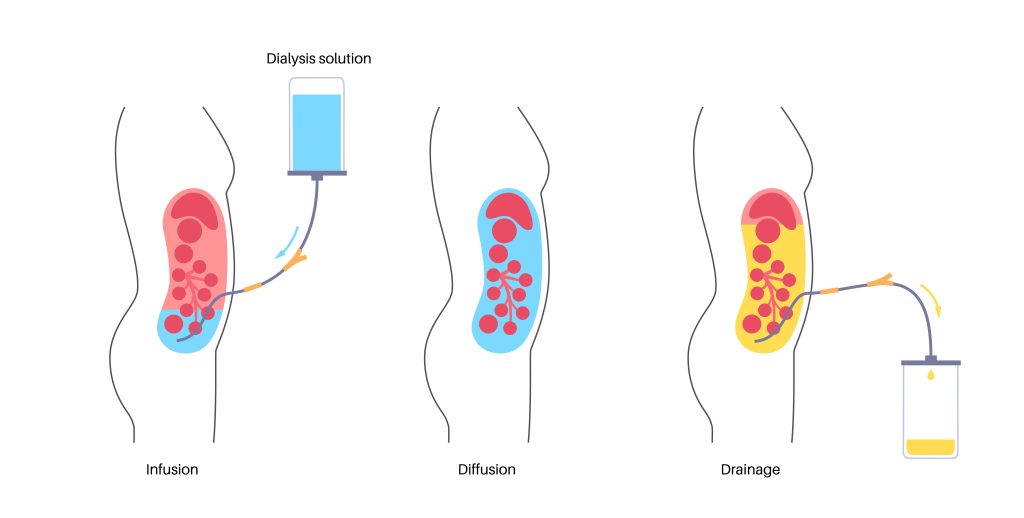
This image illustrates the process of peritoneal dialysis, a type of dialysis treatment for patients with kidney failure. Peritoneal dialysis uses the lining of the abdominal cavity (the peritoneum) as a natural filter to remove waste products and excess fluids from the blood.
Key Steps in Peritoneal Dialysis:
Infusion:
A dialysis solution (dialysate) is infused into the abdominal cavity through a catheter. This solution contains a mixture of minerals and glucose that helps draw waste products and excess fluids out of the bloodstream.
Diffusion:
As the dialysate sits in the abdominal cavity, waste products and excess fluids diffuse from the blood vessels in the peritoneal membrane into the dialysis solution. This process relies on the natural movement of substances from an area of higher concentration (blood) to an area of lower concentration (dialysate).
Drainage:
After a set dwell time, during which the dialysate absorbs waste products and excess fluids, the used dialysis solution is drained out of the abdominal cavity through the catheter. The waste-laden solution is collected in a drainage bag and discarded.
This cycle of infusion, diffusion, and drainage is typically repeated several times a day, with each cycle taking a few hours. Peritoneal dialysis allows patients to perform dialysis at home, providing more flexibility and independence compared to hemodialysis.
Quiz
Please note that our articles are not intended to guide personal health decisions.
This content has been curated by Renes Care. Unauthorized use or reproduction is prohibited.
© Renes Care. All rights reserved.
